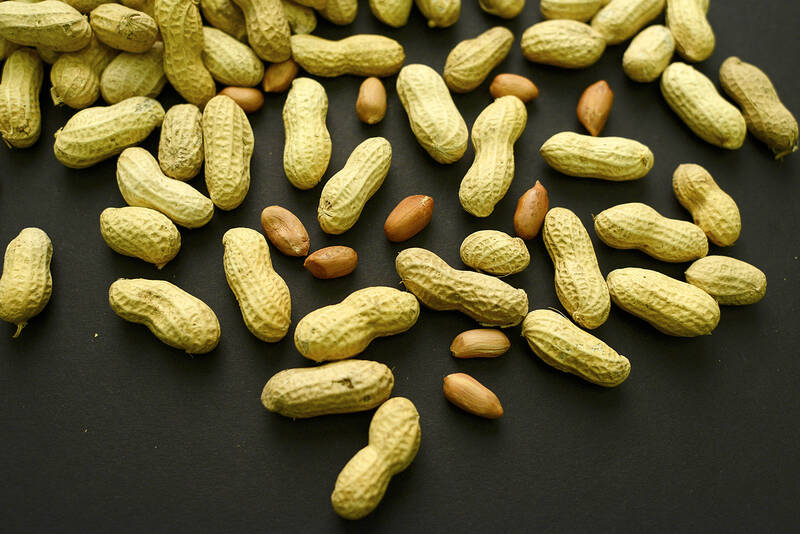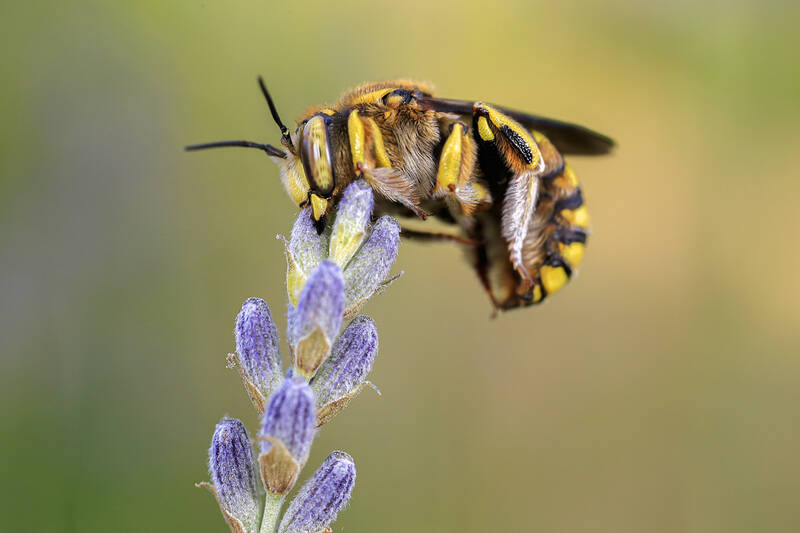When Theresa MacPhail was four, her brother was killed in an accident. When she was 14, her mother died in a car crash. And when she was 24, her father died from anaphylactic shock after a bee flew in through the open window of his truck and stung him in the neck. For anyone else, these devastating experiences would almost certainly have been psychologically catastrophic.
“I have several friends who are psychology professors, and they’re always saying, ‘No offense but, by rights, you should be a drug addict, or have severe emotional issues,’” she says, smiling, over Zoom from her home in New York, wearing a cheerful sweatshirt covered in luminous kittens.
Instead, MacPhail decided to use what she’d been through as the bedrock for her PhD at UC Berkeley, and then her career as a medical anthropologist.

Photo: AP
‘DOYENNE OF DEATH’
“I’m like the doyenne of death. I have been thinking my whole life about the things that make people ill and pass away, because of my history. These are the waters I’ve been in since I was a kid. Rather than ignoring it, I decided to go at all my fears and insecurities about mortality. And then I basically made it my profession.”
Much of MacPhail’s anthropological research has been into our collective fear of viruses, but six years ago and in her late 40s, repeated chest infections led to her unexpectedly being diagnosed with respiratory allergies.

Photo: EPA-EFE
“When you’re 24, you think you’re invincible, so the only time I thought about whether I had the same allergy as my dad was when a bee came near me. But after I was diagnosed, I told all my friends about trying to figure out what I’m allergic to, and it turns out everyone has an allergy story. And then I thought, ‘Wait, just how prevalent are allergies?’ I had questions about whether this is just happening to us now, or was it the same in the past? I found academic articles but nothing accessible. I was complaining to a friend who is also a medical anthropologist. And that conversation is now famous in my mind, because he said to me, ‘Hey, aren’t you a researcher?’”
The result is a brilliantly comprehensive and highly readable book, Allergic: How Our Immune System Reacts to a Changing World, five years in the making and the first ever to track both the history of allergies and the state of modern allergy science, while also trying to get to the bottom of how, almost 30 years ago, her father came to be unknowingly and fatally allergic to bee venom, and whether she might be, too. If that sounds outrageously complicated, it was.
“Every allergist I interviewed told me it couldn’t be done. They were all like, ‘What are you trying to do? And I said, ‘I’m trying to do the whole story.’ And they said, ‘All allergies?’ And I said, ‘Yeah’, and they said, ‘Good luck.’”

Photo: EPA-EFE
It’s startling that this is the first popular science book of its sort.
“Culturally, people have self-trained that allergies are not a big deal. But allergies are a signal that your immune system isn’t happy with the world you live in. And I think that’s a conversation we should all be having.”
ALLERGY SUFFERERS

Photo: EPA-EFE
Despite interviewing practically every top allergist and allergy researcher in the world and being comprehensively tested, it is very unlikely MacPhail will ever know exactly what she is allergic to, unless she is unlucky enough to have an extreme and therefore very obvious reaction. Her experience mirrors that of many allergy sufferers.
My six-year-old daughter has a respiratory allergy and, even after testing, we have no idea why. Because it’s mild and far from life-threatening, we haven’t been able to get a referral to an NHS allergy specialist, even though it makes life miserable. She also had cow’s milk and soy protein allergies as a baby, making her one of the 48 percent of allergic people who have more than one allergy.
“The only way to know for sure if you have an allergy is to see someone who specializes in it,” MacPhail says. “But I don’t want to be glib about that, because lots of people just can’t: there aren’t that many allergists and it’s not a popular speciality. And if your allergies don’t qualify, you’ll be paying out of pocket.”
Other factors affect access to services, too.
“For instance, with skin allergy, for years they only trained people on white skin, so eczema can be under-diagnosed on brown skin,” MacPhail says.
In the UK, getting a referral or a prescription can depend on the amount of training your particular GP has voluntarily undertaken — allergies were only made a compulsory part of the GP curriculum in 2019, meaning many GPs may have no allergy training at all, despite allergies being the subject of 8 percent of all GP appointments. There are only 40 adult allergy consultants, and even fewer pediatric specialists working in the NHS, according to the charity Allergy UK, which is currently calling for specialist allergy nurses to be placed in all GP practices, following a trial in which 95 percent of allergy patients were successfully treated in their doctor’s surgery.
Anecdotal evidence has long suggested that our allergy problem is getting worse, but until recently it’s been hard to be sure. We are better at diagnosing allergies than we were two centuries ago, say, and the theory has always been that back then, people were more worried about tuberculosis or any of the myriad other things which could kill you or your children in the pre-antibiotic and antiseptic age.
A runny nose, itchy rash or upset stomach would barely register, meaning that while fatal reactions to bites and stings certainly happened, if respiratory, dermatological or food allergies did exist, no one took much notice. (On the other hand, diarists like Pepys recorded every niggle, so if chronic allergies had been common before the Industrial Revolution, debilitated sufferers would surely have left clues behind?)
ALLERGIES INCREASING
MacPhail, however, has gathered a raft of data which conclusively shows that yes, we are becoming more allergic. There’s the study by the Food Allergy and Anaphylaxis Network showing that peanut allergy now runs at 1 in every 70 kids, versus 1 in 250 in 1997. In the US, on average, someone now arrives in A&E every two hours with a severe allergic reaction. A study by Imperial College London suggests food allergy anaphylaxis increased by 5.7 percent between 1998 and 2018. US hospital admissions for asthma tripled between 1970 and 1990, and asthma rates continue to climb in developing countries.
I asked every expert, what is the cause? They simply said everything, it’s everything we’re doing
It’s trickier to measure either national or global rates of less catastrophic allergies, such as hay fever, which was first observed in the 1800s, or allergies which cause localized reactions, in part because so many people self-diagnose — sometimes accurately, sometimes not — and because GPs don’t always recognize or record allergies.
MacPhail’s conservative estimate, after wading through global datasets of highly variable quality, is that 10 percent of the world’s population — 800 million people — will have a respiratory allergy at some point in their lives. But she says it’s impossible to know exactly how many people have other allergies, because there is so much variation in how a person is diagnosed, if at all.
ALLERGIES VS INTOLERANCE
Another problem with the data — which often relies on self-reporting — is the public’s misunderstanding of the difference between intolerances and allergies.
“Most of us do not understand what the results of a scratch test show,” says MacPhail, of the tests done by breaking the skin and applying a tiny amount of possible allergens, then waiting to see if a skin reaction occurs.
“They’re just telling you if you have a sensitivity. The difference between sensitivity, intolerance and allergy is the number one thing all allergists wish we could understand.”
Can she help us?
“This is why it’s so important to get access to better care, because it’s almost impossible to know without seeing an allergist. The best example is lactose intolerance versus milk allergy. They can seem similar, but the difference is that when you have an intolerance, you don’t produce the enzyme that breaks down the milk protein, which gives you an upset stomach and really does not feel good. It also does not feel good if you have a milk allergy and you ingest milk, but the difference is that you are activating mast cells, basophils, T-cells and IgE antibodies and your whole system is going into effect. But it’s really difficult at a symptom level — unless you go into anaphylaxis — to know which is an intolerance and which is allergy.”
When it comes to scratch tests, it’s even more confusing.
“If someone thinks they have a milk allergy and they react every time they drink milk, but they have a blood test showing normal antibody levels and their skin test is negative, then the likelihood of allergy is slim to none. On the other hand, your scratch test could leave you with a huge welt on your arm, but you’ve never had a reaction to milk in real life.”
Without an allergist to do your case history and family history and combine your various blood and skin results, the welt just means you have a sensitivity — which might never result in symptoms, and doesn’t necessarily mean you need to change your behavior.
It’s also easier to get taken seriously when you call your symptoms an allergy.
“I want to stress that intolerances are terrible and I understand why it’s confusing. On Reddit, there’s a subreddit for allergies, and people post pictures of the welts on their arms or backs after a scratch test, saying, ‘Look at all these things I’m allergic to.’ These poor people are then going to be avoiding all these things, when they don’t have to. And here’s the rub: if you avoid something, you can actually accidentally trigger an allergy because you are denying your immune system the training it needs to tolerate it. You think you’re allergic to milk, you don’t drink milk, and your body forgets what milk protein looks like. The next time you ingest it, you might have given yourself an allergic response.”
So why are we getting more allergic?
“No one knows what the smoking gun is. It’s multifactorial. That’s quite overwhelming and to think about what the solution would be is overwhelming, too. I asked every expert: ‘What is the cause?’ All of them refused to answer and simply said ‘Everything.’ It’s everything we’re doing.”
There are many things which MacPhail’s exhaustive research shows are part of the allergenic picture. The mass movement of people to cities during industrialization, cutting our access to daylight, animals, dirt and native plants (the UK industrialized first and fastest, which may explain why we are in the global top three countries for allergies).
More of us live in housing which is warmer, damper, moldier and fuller of upholstery-loving dust mites. Children playing outdoors less in the first three years of life. Vitamin D deficiency due to a shift to a desk-based economy. Using bacteria-killing, lung-irritating cleaning products. Antibacterial wipes. Genetics. Hormones. Using dishwashers, which remove all traces of potentially protective bacteria from our crockery. Antibiotics. Increasing C-section births and decreasing rates of breastfeeding, both of which seem to impact the newborn microbiome and are associated with higher rates of allergy. Climate change causing higher levels of pollen. Air pollution. The use of proton pump inhibitors like Nexium for digestive issues. Even garden cities and our increased focus on greening urban areas might be increasing nasal allergies.
“Studies have shown that access to green spaces is good for our mental health. Except that when I read about green projects now, because of my research, I’m like, ‘Oh no, what kind of trees are they going to plant though?’”
Fundamentally, what Allergic shows is that our immune systems haven’t adapted to the modern world at all.
“Allergy rates are just going to keep climbing. We need to start thinking about hard things, and we need to start doing hard things, which maybe means completely reorganizing the way we approach everything. We have two options, and one is really, really hard. The other one is really, really hard in a different way. Our bodies are not comfortable. We are irritating ourselves to death.”

Last week saw the appearance of another odious screed full of lies from the People’s Republic of China (PRC) Ambassador to Australia, Xiao Qian (肖千), in the Financial Review, a major Australian paper. Xiao’s piece was presented without challenge or caveat. His “Seven truths on why Taiwan always will be China’s” presented a “greatest hits” of the litany of PRC falsehoods. This includes: Taiwan’s indigenous peoples were descended from the people of China 30,000 years ago; a “Chinese” imperial government administrated Taiwan in the 14th century; Koxinga, also known as Cheng Cheng-kung (鄭成功), “recovered” Taiwan for China; the Qing owned

In Taiwan’s politics the party chair is an extremely influential position. Typically this person is the presumed presidential candidate or serving president. In the last presidential election, two of the three candidates were also leaders of their party. Only one party chair race had been planned for this year, but with the Jan. 1 resignation by the currently indicted Ko Wen-je (柯文哲) of the Taiwan People’s Party (TPP) two parties are now in play. If a challenger to acting Chairman Huang Kuo-chang (黃國昌) appears we will examine that race in more depth. Currently their election is set for Feb. 15. EXTREMELY

Jan. 20 to Jan. 26 Taipei was in a jubilant, patriotic mood on the morning of Jan. 25, 1954. Flags hung outside shops and residences, people chanted anti-communist slogans and rousing music blared from loudspeakers. The occasion was the arrival of about 14,000 Chinese prisoners from the Korean War, who had elected to head to Taiwan instead of being repatriated to China. The majority landed in Keelung over three days and were paraded through the capital to great fanfare. Air Force planes dropped colorful flyers, one of which read, “You’re back, you’re finally back. You finally overcame the evil communist bandits and

They increasingly own everything from access to space to how we get news on Earth and now outgoing President Joe Biden warns America’s new breed of Donald Trump-allied oligarchs could gobble up US democracy itself. Biden used his farewell speech to the nation to deliver a shockingly dark message: that a nation which has always revered its entrepreneurs may now be at their mercy. “An oligarchy is taking shape in America of extreme wealth, power and influence that literally threatens our entire democracy, our basic rights and freedoms,” Biden said. He named no names, but his targets were clear: men like Elon Musk